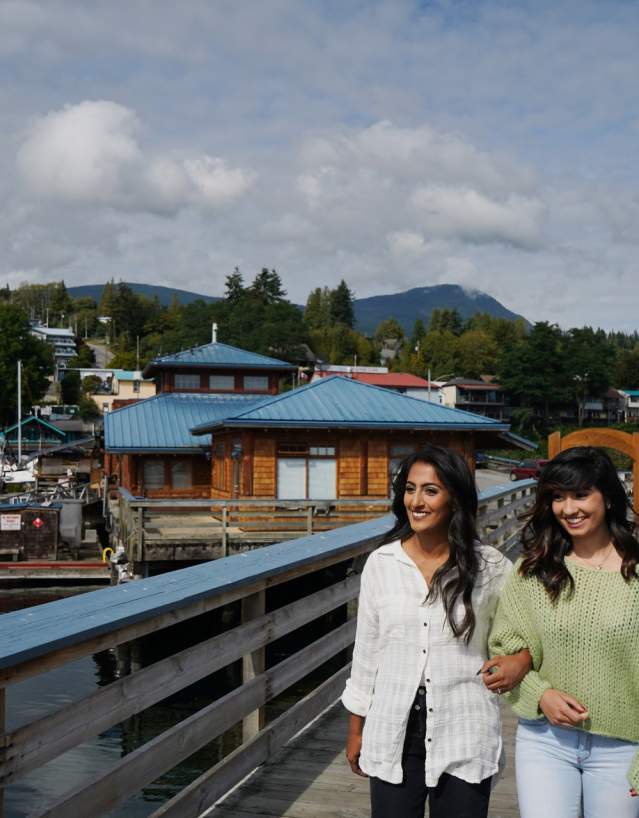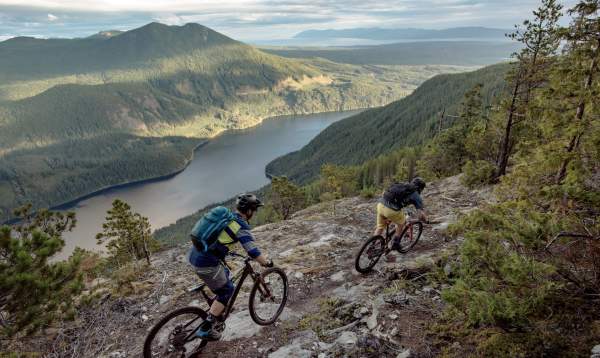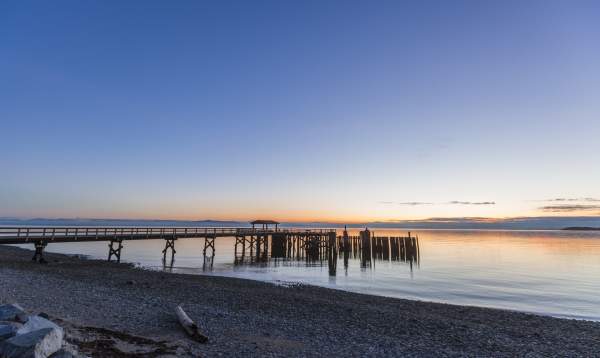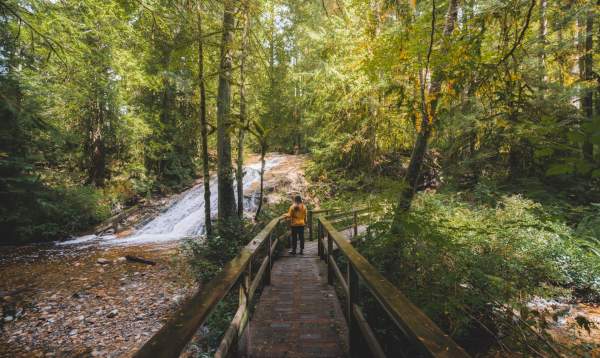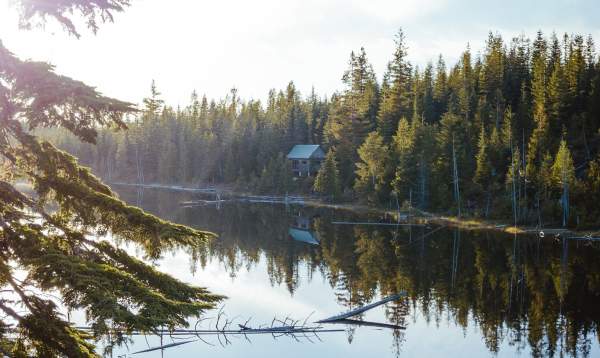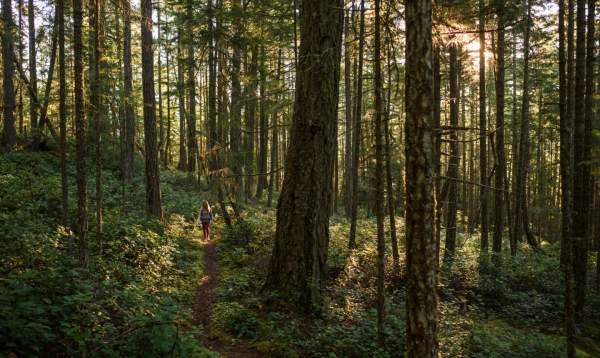About the Sunshine Coast
Located on the southern coast of British Columbia, Canada, the Sunshine Coast extends 180 kilometres between Howe Sound in the southeast and the entrance to Desolation Sound in the northwest. The rugged mountains bordering these inlets cut the Sunshine Coast off from direct road connection to the rest of the province, so even though it’s part of the British Columbian mainland, you can only get to the Sunshine Coast by ferry, private boat, or plane.
The Sunshine Coast includes the traditional territories of the Tla’amin, Klahoose, shíshálh, Sḵwx̱wú7mesh, and Homalco Nations.
History
First Nations people have been on this land since time immemorial. Part of the larger Coast Salish people, these communities thrived for millenia, creating rich cultures celebrated for a deep connection to place and understanding of the coastal landscape. Indigenous artifacts date upwards of 10,000 years ago and represent a continuous occupation of the area. The Coast Salish people engaged in fishing, shellfish harvesting, hunting, berry picking, trade, and more, and were noted for their totem poles, cedar canoes, and unique language.
Preceding the colonization of their traditional territories by European settlers, smallpox ravaged the Nations close to the point of extinguishment. The disease was brought to the continent by settlers in various waves from the 1600s - 1800s. As recognized by the Truth and Reconciliation Commission, residential schools were then created by the government "for the purpose of separating Aboriginal children from their families, in order to minimize and weaken family ties and cultural linkages, and to indoctrinate children into a new culture." The long-lasting effects of colonialism are felt today by all Indigenous Peoples across Canada. Despite the unimaginable cultural trauma experienced by the First Nations through colonization, the Sḵwx̱wú7mesh, shíshálh, Tla’amin, Klahoose, and Homalco people continue to thrive in their traditional territories, demonstrating great resilience and generosity of spirit.
Settlement by Europeans and other non-Indigenous peoples began in the 1880s. Fishing and logging were the main occupations of the settlers, along with small-scale farming, mainly for their subsistence. The establishment of logging camps in the Powell River area in the 1880s was a precursor to more significant economic developments.
Between 1910 and 1912, the pulp and paper mill in Powell River was built on the waterfront by the Brooks, Scanlon & O’Brien Company. By 1930 the mill employed more than 2,000 workers and had become the largest newsprint mill in the world. The development of the highway—which reached Pender Harbour in the 1930s and the northwest end of the Sechelt Peninsula in the 1950s—brought the settlements closer together and, after car ferry service began in 1951, closer to Vancouver. Subsequently, the population increased rapidly. Powell River Townsite was designated as a National Historic District of Canada in 1995—one of only seven in Canada. A charming community that's remarkably intact, it boasts over 400 original buildings within the borders of the 1910 town plan.
The naming of “The Sunshine Coast” originated with a pioneer family: the Roberts of Roberts Creek. In 1914, Harry Roberts painted “The Sunshine Belt” name on the side of the freight house on the first wharf built in Roberts Creek, and the name was used to promote Roberts Creek as a summer resort destination. When Black Ball Ferries started a car ferry service to the coast in 1951, they started using the term “Sunshine Coast” to promote the whole area, and the name quickly caught on.
You can learn more about the Sunshine Coast at one of several local museums.
Environment
The Sunshine Coast’s climate is characterized by mild, moist winters and warm, dry summers. The Sunshine Coast remains sheltered from the open Pacific, and temperatures on the Coast can range from a damp, cold, and wet 2C (35F) in winter to highs of 30C (86F) in summer. The annual rainfall is approximately 100cm (40in). The low annual rainfall and often long, dry summers mean everyone on the coast must help conserve water.
Winters on the Sunshine Coast are mild enough that it’s possible to snowshoe at the Knuckleheads or Dakota Ridge in the morning and then go golfing the very same afternoon. Depending on your planned activities and time of year, we recommend packing the following basics: bring layered clothing, a t-shirt, sweater, rain jacket, comfortable shoes/boots, hat, sunscreen, and casual evening clothing and shoes.
The Sunshine Coast is full of rugged coastline, beaches, lakes, trails, and parks to discover. This is a paradise for outdoor enthusiasts and a prime location for everything from kayaking and scuba diving to mountain biking and hiking.
Wildlife
The Sunshine Coast is home to abundant wildlife, including black bears, cougars, coyotes, wolves, whales, and sea lions. Our collective responsibility is to ensure that our recreational pursuits do not contribute to conflict between humans and wildlife. Learn more about local wildlife and backcountry safety at WildSafeBC.com and AdventureSmart.ca.
Communities
The Sunshine Coast is split into two main areas: the Northern Sunshine Coast and the Southern Sunshine Coast. They are separated by a large inlet but are connected by car ferry (between Earls Cove and Saltery Bay) and by air.
The South Coast and the North Coast are home to several communities and islands. Consider spending some time in multiple communities during your stay to gain a deeper connection to the Coast and understand it better as a whole.
First Nations
The Sunshine Coast region is home to the traditional, unceded, and ancestral territories of the…
South Coast
The Southern Sunshine Coast is perfect for quick getaways and extended vacations alike. Even though…
North Coast
The northern section of the Sunshine Coast is typically less busy than the southern section, and it…
Beaches
Some beaches are rocky and better for finding tidepools or skipping rocks, while others have…
Parks
Explore marine access-only parks, provincial campgrounds, established trail networks, picnic areas…
Lakes
Although lakes might not be the first thing you think about when you think of the Sunshine Coast…
Trails
Trails are plentiful and varied throughout the Sunshine Coast. No matter what type of trail…
Blog
Learn more about the Sunshine Coast with our latest stories, blog, and news updates.
